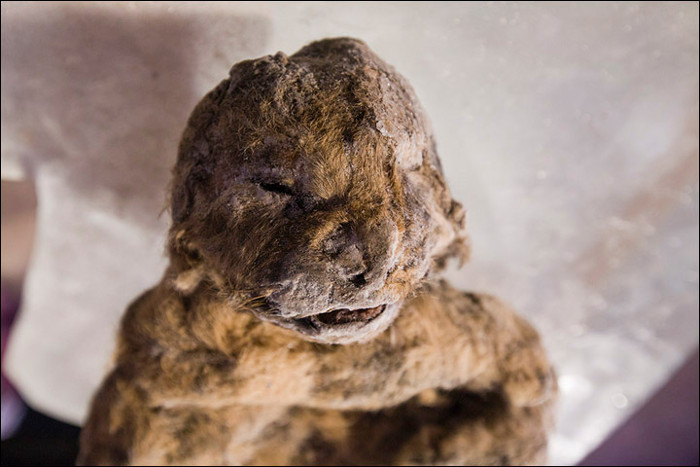Detected the double lion's body 12,000 years intact
Under the thousand-year-old ice of Siberia, the corpse of the lions of the cave is still as intact as it was when it was full of feathers, skin and internal organs.
Detecting intact young lion couples like when they were alive
Fox News reported that the scientists announced the bodies of two intact young cave lions in Russia on November 17. They were discovered under the ice in Yakutia in late summer. This is the first time humans have seen this extinct animal for more than 10,000 years.
As big as the domestic cats, the young cave lion couple named Uyan and Dina , placed according to the place found in the Uyandina River area. Soft tissue of two animals is well preserved that researchers at the Russian Academy of Science believe that replication is feasible. They are focusing on examining the internal organs and DNA of young lions to understand their origins.

Child cave lions still retain their outer coat after 12,000 years under the ice.(Photo: Siberian Times).
According to the researchers, the mother of a pair of young lions placed them in the pit for protection purposes, but a landslide covered the crater. The area remained the same from then on, until the Uyandina River suddenly moved, revealing cracks in the ice. A local resident named Yakov Androsov caught an ice lens containing two lions.
"Normally, all we find is the skeleton, if they're lucky they still have some collagen left over. Occasionally, we find interesting, but the detection of extinct animal remains for 12,000 years. With intact skin and internal organs unbelievable, " said Julie Meachen, fossil processing expert at Des Moines University, USA.
Cave lions were first identified in 1810. They lived about 10,000 to 300,000 years ago. Scientists do not know the number of this species as well as whether it belongs to the African tiger. With this discovery, researchers hope to discover the mysteries of cave lions and the Ice Age.
- Reviving a lion from a corpse intact for 12,000 years
- The mystery of the corpse after 23 years remains intact
- China: Found the female body hundreds of years intact
- Shocking discovery about the little-known lion
- Excavating an ancient tomb containing an intact male human body suspected of being an ancient Chinese aristocrat
- Video: A close-up of the horrifying battle of lions
- Crocodiles are torn by lions because they dare to loot their lures
- Not only rhinos and tigers, African lions will soon disappear
- Detected intact 1.1 ton skull of tyrant dinosaurs
- The giant lion once wandered across Europe
- African lions in the Botanical Garden give birth
- Bloody hippos with lions
 Discovered an ancient centipede fossil 99 million years old
Discovered an ancient centipede fossil 99 million years old Discovered bat-like dinosaurs in China
Discovered bat-like dinosaurs in China Discovered a 200-year-old bronze cannon of the coast
Discovered a 200-year-old bronze cannon of the coast Discover 305 million-year-old spider fossils
Discover 305 million-year-old spider fossils